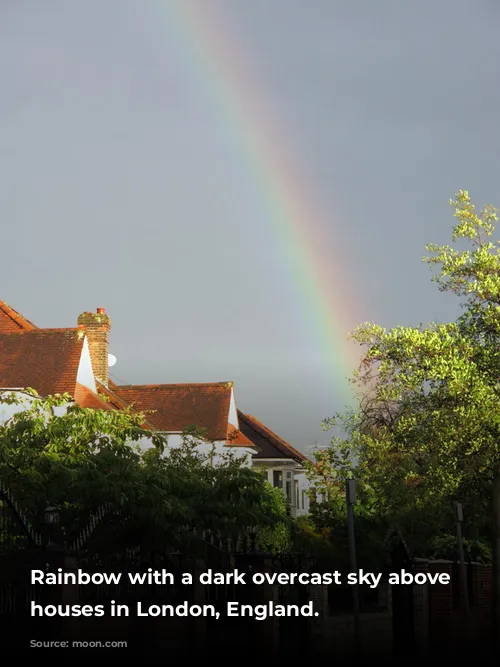London, a captivating city known for its history and vibrant culture, has a unique charm that extends to its weather. The latitude of London, a mere 51°30′ North, plays a significant role in shaping its distinct seasons. While London enjoys a temperate climate, its weather can be a fascinating and sometimes challenging experience.
The Changing Seasons: From Short Winter Days to Long Summer Nights
London’s weather patterns can be quite a contrast, especially when compared to other parts of the world. As the clock turns back at the end of October, signaling the start of British Standard Time, days shrink dramatically, ushering in the short, dark days of winter. The sun, barely peeking over the horizon around 8am, sets before 4pm, leaving a sense of gloom that many find depressing, especially those accustomed to the sunshine of California.
However, the long days of summer offer a stark contrast. With sunrise occurring as early as 4am and birds chirping well before dawn, the sun streams into bedrooms as early as 5am. This can make it challenging to sleep during the summer months, especially for those who struggle with early morning light. Even getting children ready for bed can be a struggle, as the sun stubbornly hangs in the sky until 9:20pm in June. While many appreciate the extra daylight hours, the extended sun can interfere with our natural sleep cycle. To counter this, many Londoners rely on blackout curtains to block the early morning light and create a dark and restful environment.

Temperate Climate, Yet Unexpected Weather Patterns
Despite its northern latitude, London enjoys a surprisingly temperate climate, thanks to the warm Gulf Stream. This ocean current, flowing from the Caribbean towards Western Europe, brings mild temperatures to the British Isles, making the region warmer than its geographical location would suggest.
London rarely experiences extreme cold or stifling heat. The average daytime temperature in January hovers around 8°C (46°F), while July brings an average high of 22°C (73°F). While Londoners may occasionally experience summer days reaching above 25°C (77°F) or even 30°C (86°F), winters rarely drop below freezing, with most homes equipped with heating to keep inhabitants comfortable during the colder months.

Embrace the Rain: A London Staple
One weather pattern that Londoners are all too familiar with is rain. Although the city’s average annual rainfall is not excessive (around 23 inches/58 centimeters), rain seems to be a constant presence throughout the year, often in the form of a gentle drizzle. A small umbrella or a waterproof jacket is a must-have for navigating London’s rainy days. While Londoners may experience an occasional thunderstorm, the rain is generally light and rarely disrupts daily life.

Snow: A Rare but Disruptive Visitor
Snow is a rare visitor to London, much to the disappointment of children eager for a winter wonderland. The city’s dense urban environment, with its numerous buildings and vehicles, generates significant heat, making it difficult for snow to settle. In fact, London is often several degrees warmer than the surrounding countryside.
However, when snow does fall, the entire city can grind to a halt. Transport systems, especially the Underground and train services, become susceptible to disruption due to freezing conditions and icy rails. London’s Underground, while known for its extensive network, is mostly underground in the city center. As the lines extend further out, the trains emerge above ground, making them vulnerable to the elements.
The snow’s most significant impact is on traffic. Even a thin layer of snow can create chaos on London’s roads, with gridlock becoming a common sight. This is exacerbated by the fact that many London drivers lack experience driving in snowy conditions, leading to accidents and further delays.
Remembering a Snowy Evening in London
A few years ago, I experienced firsthand the chaos that snow can bring to London. While driving to a mall in North London on a late afternoon, snow began falling. I rushed through my shopping, eager to beat the evening rush, only to be caught in a sudden snowfall that turned the roads into a slippery mess. The inch or two of snow, insignificant in many parts of the world, brought London to a standstill. The combination of inexperienced drivers and unanticipated snowfall created a frustrating situation, leaving me trapped in the mall’s parking lot for over two hours. The snowy conditions, coupled with a slight hill at the mall’s entrance and exit, created a near-impossible situation for many drivers. It was a stark reminder of the power that snow can wield in London, even in small quantities.
A Changing Climate: A Potential Threat to London’s Weather
While London’s climate has been relatively stable, there are signs that its weather patterns may be shifting. After a period of mild winters, the past few years have brought colder temperatures and wetter conditions. This shift may be part of a long-term weather cycle or a more concerning indication of climate change. If climate change is indeed affecting Britain’s weather, London needs to prepare for more extreme weather events, especially snow and rain.
Warm Summers: A Rare Treat
Londoners rarely experience sweltering summers. The best they can hope for is a few days in the low 80s (Fahrenheit), when the city becomes pleasantly warm, and residents flock to parks to enjoy the sunshine. However, most London homes are not equipped for long hot summers, making air conditioning a rarity. While I can remember a single unbearably hot summer during my two decades in London (the summer of 2003), most summers are characterized by a pleasant warmth with occasional spells of hotter weather lasting a week or two. For the most part, London’s summers tend to be damp affairs, a fact that any Wimbledon tennis fan can attest to.
Conclusion: Embracing the Unique Weather of London
London’s weather, with its diverse and sometimes unexpected patterns, is a fascinating aspect of the city’s charm. From the short, dark days of winter to the long, sunny days of summer, from the frequent drizzle to the rare but disruptive snowfall, London’s weather is a constant presence in the lives of its residents. While navigating the city’s weather can be challenging at times, it adds a unique dimension to London’s character, making it a truly captivating and memorable city.
